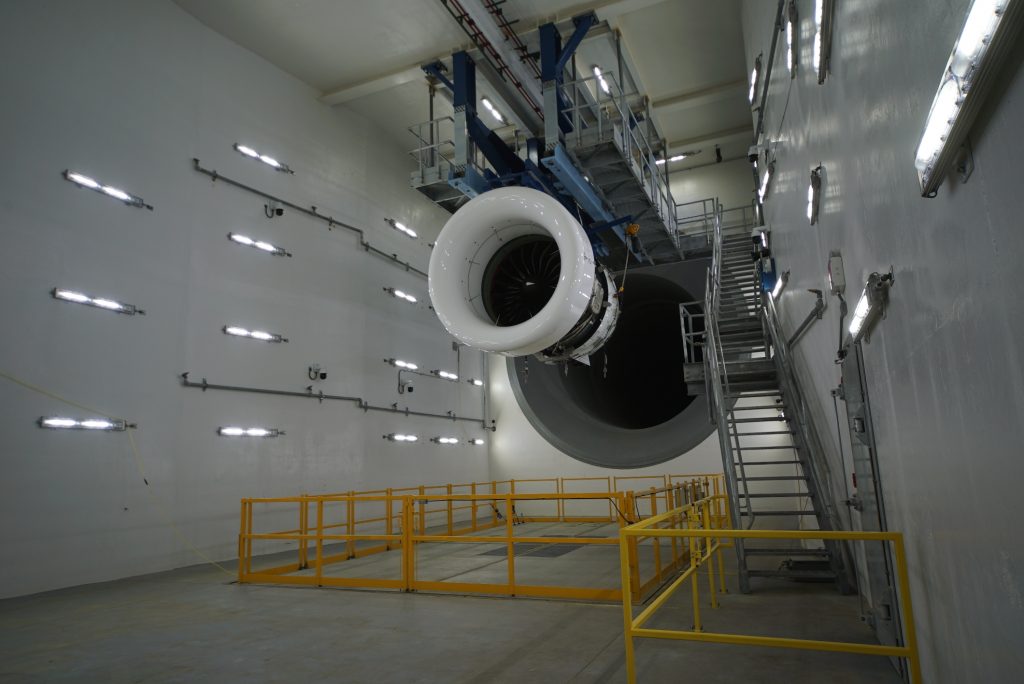
BROOKLYN: A long-abandoned warehouse in a neighborhood newly teeming with expensive restaurants, designer stores, and astronomical rents has a new tenant: a $300 million tech incubator founded by United Technologies, the massive corporation which makes everything from elevators to jet engines for the F-35.
The big bet on creating a space for about 200 engineers, designers, and big thinkers to develop new manufacturing concepts and experiment with ways to solve old problems is part of a wider push in both government and industry to catch up with the staggering pace of technological change, while trying to win back some of the top engineering talent that has decamped to Silicon Valley in recent years.
“We have given them what we want. We give them the vision and data, then they get to work,” P&W president Bob Leduc told reporters at the facility Tuesday morning. If everything goes according to plan the site will host about 400 people in the coming years.
The gleaming offices, which look out over the East River and the Manhattan skyline, teams work on a variety of projects for P&W’s parent company, United Technologies, only a few of which are focused on the jet engine business.

View from the UT incubator office in Brooklyn.
In order to focus exclusively on the company’s military business, the company’s engine segment has opened up its own, smaller innovation office, dubbed GatorWorks, at its engine facility in Florida. There are several cross-functional teams working on projects that report to Matthew Bromberg, president of the company’s military engines division.
The idea, Bromberg told me, is to leverage commercial capabilities in rapid prototyping, iterative design, procurement, and testing to eliminate unnecessary internal barriers that slow development, stymie creativity and frustrate engineers.
He said that the Pentagon has grown frustrated with the 10- to 20-year development cycle for new engines, and is looking to slash about 50 percent from current development costs.
The GatorWorks teams were stood up in the last few months, so the company won’t say much about specific programs or progress just yet. But Bromberg said one of their jobs is to identify non-traditional suppliers, something that top Pentagon officials have said they’re also eager to do.
The guiding principle of the teams are, to “use all of Pratt & Whitney’s intellectual property, don’t hurt anyone and don’t break the law”, Bromberg said.
The issue for the Pentagon is that some of the top software and engineering talent out there isn’t interested in working for the government, given the red tape, strict rules, and long, slow timelines that drag program out over decades, rather than days and weeks.
There’s also distrust.
Google execs told employees earlier this month that it was pulling out of its participation in Project Maven once its current contract with the Pentagon expires in 2019, a decision reached after more than 3,000 employees protested the company’s involvement in the program that organizes and analyzes data being pulled from American drones flying over the Middle East and Africa. Engineers at the company said they didn’t want to be involved in any military weapons programs, and said the data being collected could be used to plan lethal attacks.
That disconnect led Obama-era defense secretary Ash Carter to found the Defense Innovation Unit Experimental (DIUx), which plopped a Pentagon office in the heart of Silicon Valley with a mandate to experiment with new technologies. While the program has been continued under the Trump administration, another Carter brainstorm, the like-minded Strategic Capabilities Office is currently under fire both at the Pentagon and among lawmakers on Capitol Hill, who are looking to move some of its work into the services.
Bromberg said that “we stand tall in the recruiting area” and that he isn’t too concerned about losing out on talent to smaller tech firms. But the mandate to move more quickly, and to shake things up both at P&W and United Technologies, points to a wider recognition that the old way of doing business might not be sustainable over time.
Army inching towards late FY25 Chinook Block II full-rate production contract
Boeing recently announced the Block II helo’s first maiden flight and plans to deliver the first production aircraft to the service in the coming weeks.


























